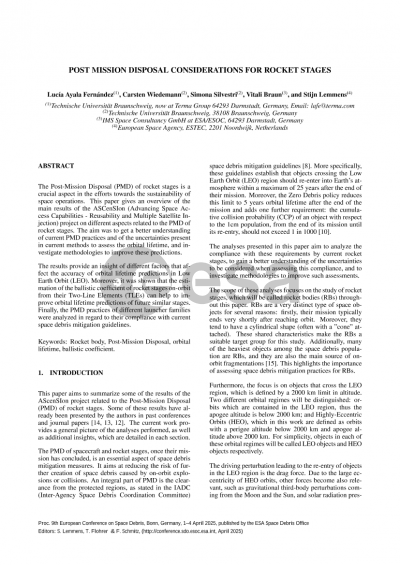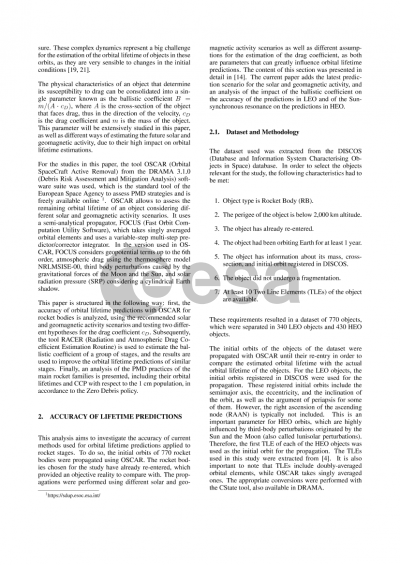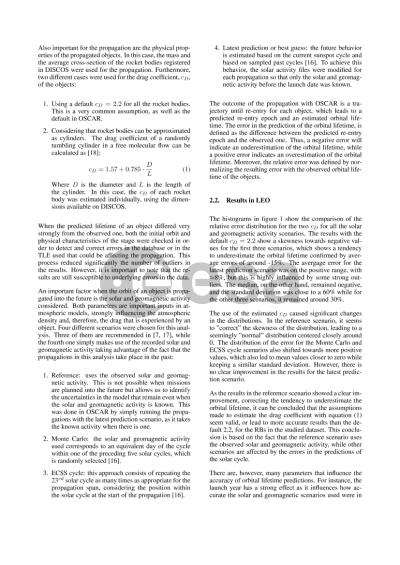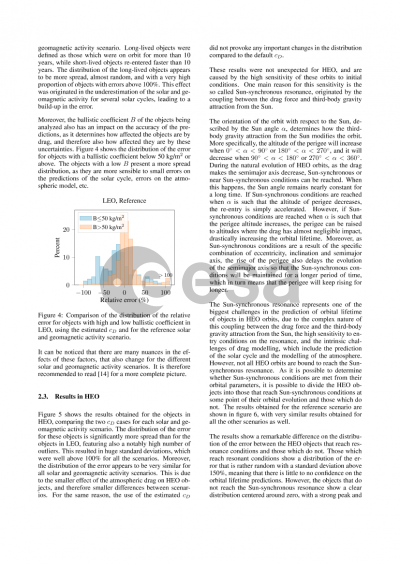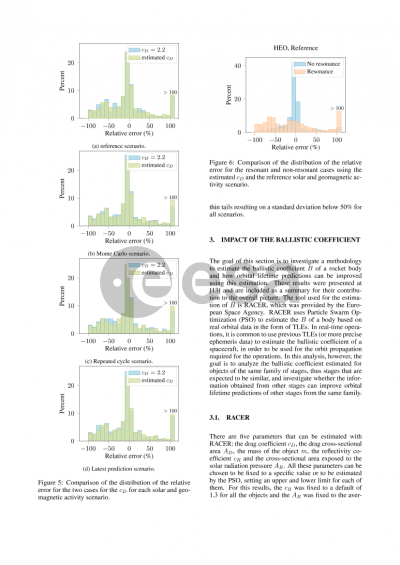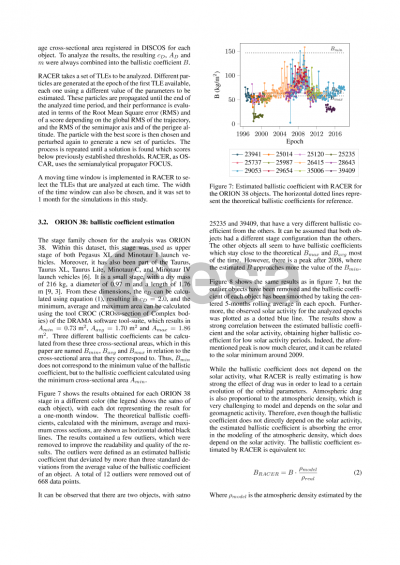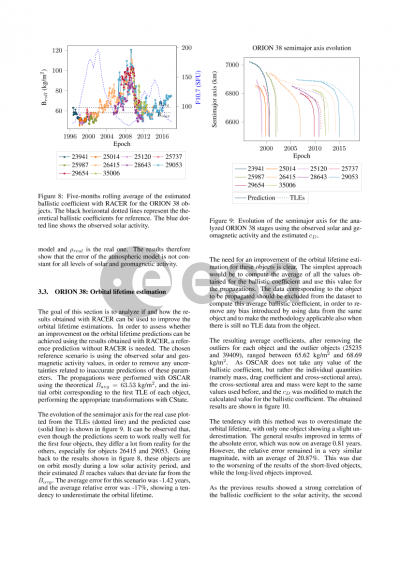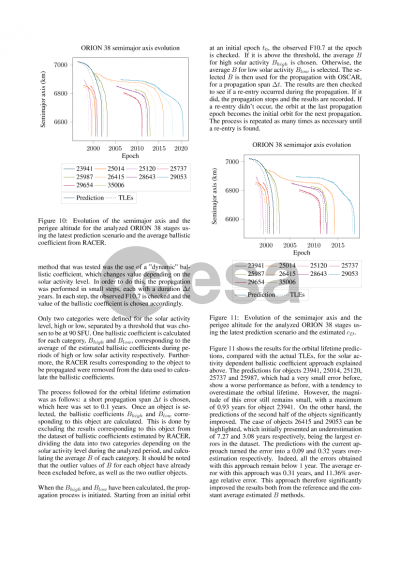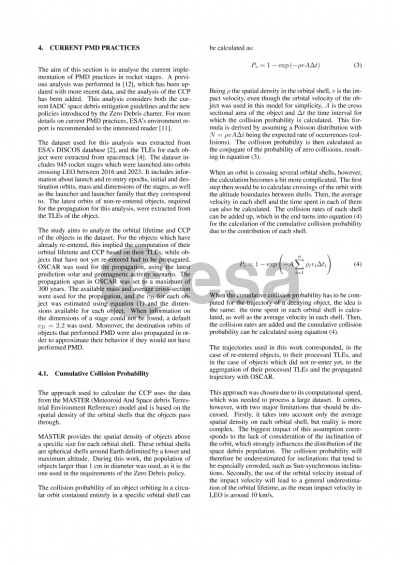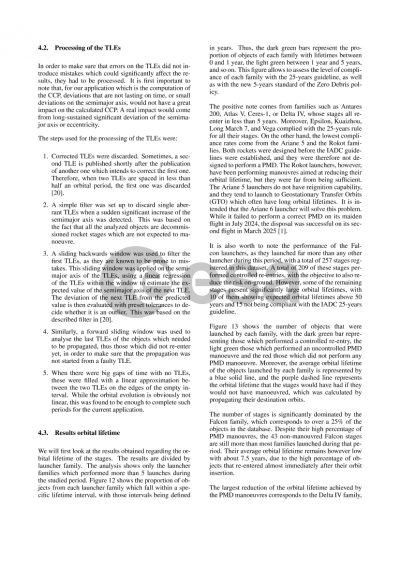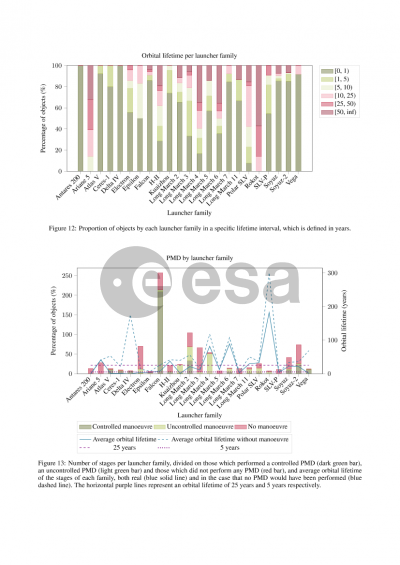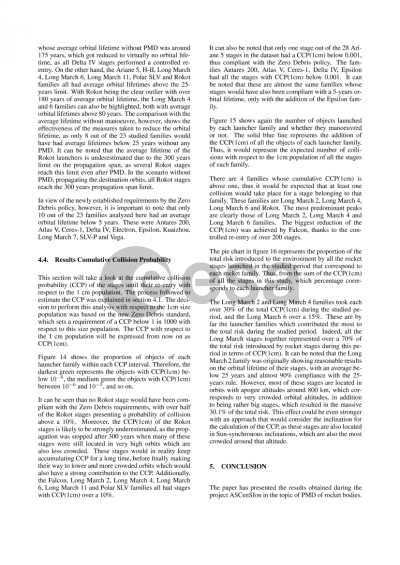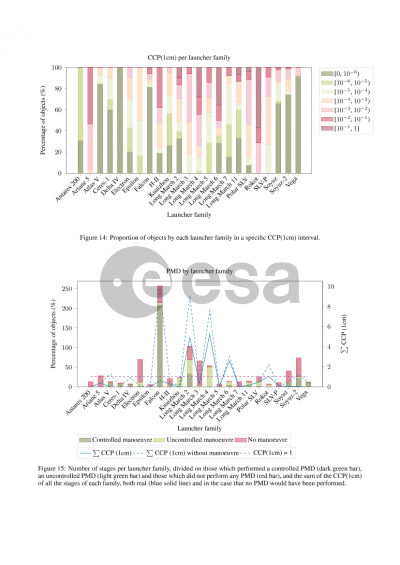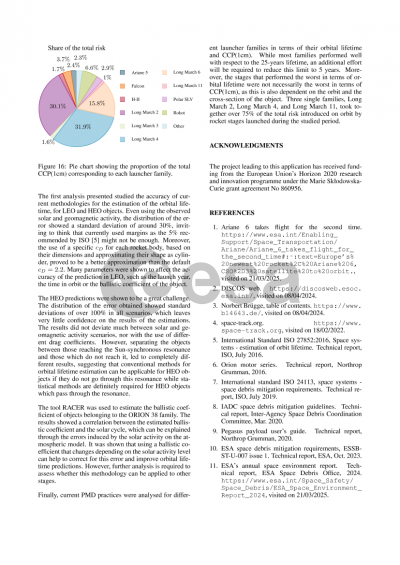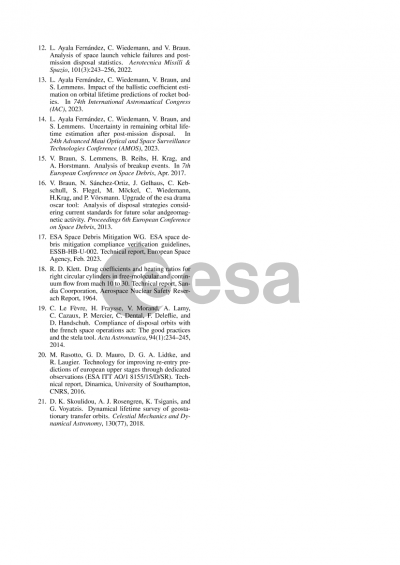Document details

Abstract
On 7 August 2024, a Long March 6A upper stage broke up in orbit, creating a cloud of at least 700 pieces of space debris. The vast majority of these fragments will remain in orbit for decades, if not centuries, posing a substantial and sustained collision risk to operational spacecraft. Such consequences emphasise the importance of implementing appropriate Post-Mission Disposal (PMD) measures for rocket stages. This paper gives an overview of the main results of the ASCenSIon project on different aspects related to the PMD of rocket stages.
First, the PMD behaviour of different launcher families is analysed. The dataset studied consisted of 974 stages launched between 2016 and 2023, extracted from the DISCOS database. For each launcher family, the orbital lifetime of the stages was analysed, as well as the reduction of the orbital lifetime achieved by the PMD manoeuvres performed. In addition, the cumulative collision probability (CCP) until re-entry was calculated for each stage with respect to the debris population larger than 1 cm, aligning with the requirements of the European Space Agency’s (ESA) Zero Debris policy. The results were also compared by launcher family and the risk reduction achieved by the PMD manoeuvres was analysed.
This is followed by a study aimed at gaining a better understanding of the uncertainties associated with current orbital lifetime predictions. A dataset of 740 rocket bodies was used for this analysis. All the rocket bodies were in orbits that intersected with the Low Earth Orbit (LEO) region, and all of them have already re-entered. The Orbital Spacecraft Active Removal (OSCAR) tool from ESA’s Debris Risk Assessment and Mitigation Analysis (DRAMA) suite was used to perform orbital lifetime predictions for all the objects in the dataset, using their first Two-Lines Element (TLE) as a starting point. The predicted re-entry epoch was then compared with the observed one. The distribution of the error was analysed separately for objects resident in the LEO region and objects in Highly-Eccentric Orbits (HEO). Moreover, the results obtained with four different solar and geomagnetic activity scenarios are compared, as well as two different assumptions for the drag coefficient. Other parameters affecting the predictions were also analysed, such as objects with a high ballistic coefficient versus those with a low one, or objects which stay in orbit for more than one solar cycle or those which re-enter faster.
Finally, ESA’s Radiation and Atmospheric Drag Coefficient Estimation Routine (RACER) was used to estimate the ballistic coefficient of specific rocket stages from their TLEs. The goal of this analysis was to find patterns for stages belonging to the same family, and using this information to improve future orbital lifetime predictions. The results show a correlation between the solar activity and the estimated ballistic coefficient, presumably due to the errors in the calibration of atmospheric models across the solar cycle. A preliminary methodology was tested, confirming that using a different ballistic coefficient in periods of high or low solar activity can improve the accuracy of the orbital lifetime predictions.
Preview
